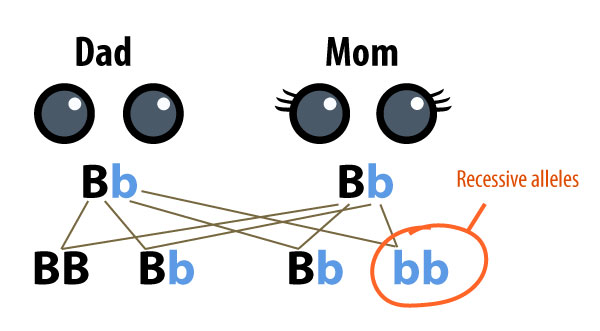- Genetics
What is Genetic Inheritance?
To inherit something means to derive or to receive something from a previous holder. Inheritance in genetic terms means an offspring, or child (like you) receiving certain traits, behavior, or characteristics from your mum and dad. Our parent’s genes will determine what we will look like.
What is an Allele?
Sometimes, there are different forms of genes from the same person. These are called Alleles (say a-leel).
To explain this further, let us use specific examples.
Let us say you have blue eyes. It would be very likely that your mum or dad also had blue eyes. If even they didn’t, the genes in their cells have blue eye traits — which they have passed on to you.
Genes determine our eye color. Eye genes usually come in two alleles: an allele for brown eyes and an allele for blue eyes. We all have a pair of alleles that determine our eye color.
- An individual who carries two copies of the same allele is homozygous.
- An individual who carries two different alleles for a certain gene are heterozygous.
So here are some possibilities of eye color below:
- A person with two blue alleles will have blue eyes.
- A person with two brown alleles will have brown eyes.
- A person with one blue allele and one brown allele will have… Brown Eyes!
Yes, this is because brown alleles are dominant alleles. Alleles can be dominant or recessive. Sometimes, a child can have blue eyes even though their mum and dad have brown eyes. This can be possible if the child inherits both blue recessive alleles from parents, as in the genetic diagram below:

Alleles are therefore very important to study because they can also help us know what kind of genetic disease may be passed on from our parents. Alleles and genes help doctors to know if a child will inherit Sickle cell disease, Huntington’s disease, or even Cystic fibrosis from their parents.
